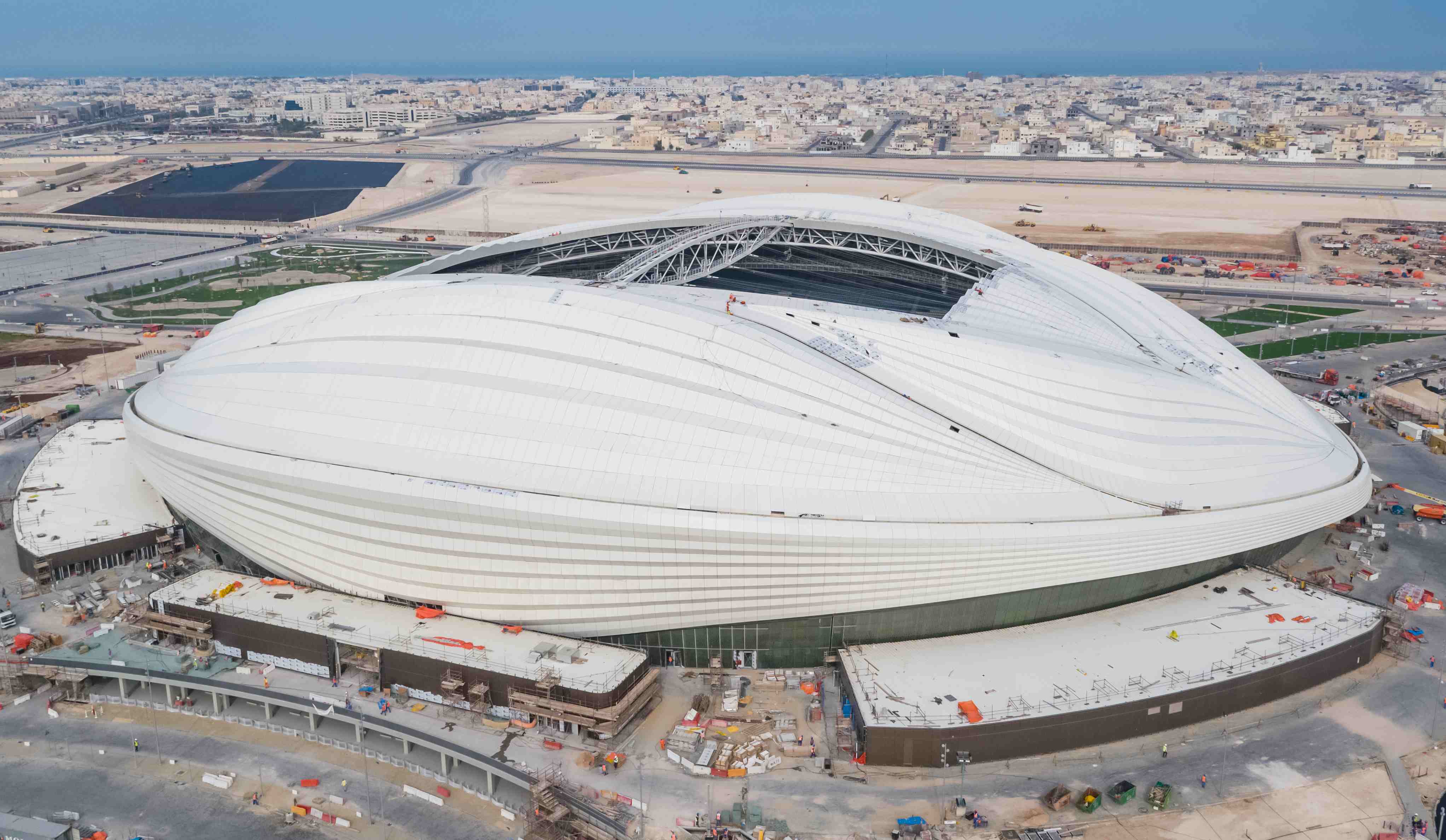.jpg)
_1-itok=GFMKQ6A9.jpg)
On 16 May Al Wakrah Stadium will host the 2019 Amir Cup final and become the second tournament-ready venue to be inaugurated ahead of the FIFA World Cup Qatar 2022™. Here are five key facts about the stadium, which is set to become a significant landmark in Al Wakrah and one of the iconic venues of Qatar 2022.
1. It's the first FIFA World Cup Qatar 2022™ stadium to be built from scratch
The Supreme Committee for Delivery & Legacy broke ground at Al Wakrah in 2014. Five years later, the stadium has become the first FIFA World Cup Qatar 2022™ tournament venue to be built from scratch. It's the second tournament-ready stadium to be inaugurated after Khalifa International Stadium, which underwent an extensive redevelopment before hosting the 2017 Amir Cup final.
2. The stadium was designed by legendary architect Zaha Hadid
The late Iraqi-British architect Zaha Hadid was inspired by the sails of traditional dhow boats and aimed to highlight Al Wakrah's traditional industries, including fishing and pearling, along with the city's exciting future, with her distinctive and futuristic design. The final stadium design was produced by AECOM, in association with Zaha Hadid Architects. Hadid was the first woman to receive the Pritzker Architecture Prize in 2004 and she won the UK's most prestigious architectural award, the Stirling Prize, in 2010 and 2011.
3. The stadium's cooling technology is state-of-the-art
The stadium has a 92m retractable roof that will provide shade to the pitch, contribute to the efficiency of the stadium's innovative cooling technology and protect the interior of the stadium from harsh weather conditions. The heating, ventilation and air conditioning system installed at Al Wakrah Stadium will cool the spectator areas using under-seat supply terminals at low velocities. More than 100 air ventilation units – split evenly between the lower and upper tiers – will serve the stadium bowl. The pitch cooling system comprises eight air handling units: four on the east side and four on the west. Each unit will connect to a plenum that runs along the pitch below the spectator seating. This plenum then feeds a number of jet nozzles that supply air across the pitch and into the field of play.
4. Qatari companies have made a major contribution to the stadium's construction
The main contractor was a joint-venture between three companies, two from Qatar, Midmac and PORR Qatar, plus Belgian company Sixco. Local company Coastal Qatar has produced the stadium seats at its custom-built factory, while Solb26 has manufactured the steel required for the stadium. Meanwhile, another Qatari company, Urban Concept, laid the turf at the stadium in just 9 hours 15 minutes. More than 50% of the budget for Al Wakrah Stadium has been invested in the local economy.
5. The stadium is modular and its capacity will be reduced to 20,000 after the FIFA World Cup™
During the FIFA World Cup™, Al Wakrah will boast a capacity of 40,000 and host matches up to the quarter-finals stage. The top tier of the stadium will be removed after the tournament and donated to a country which needs sporting infrastructure. Post-2022, the stadium will become the home of popular Qatar Stars League side Al Wakrah Sports Club.

